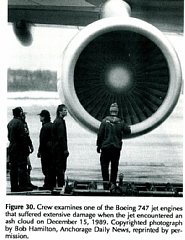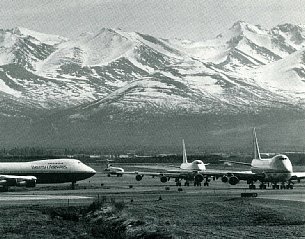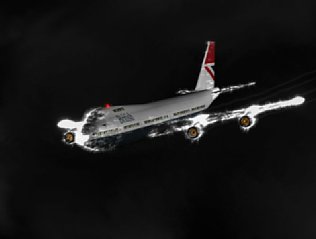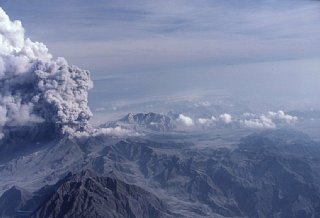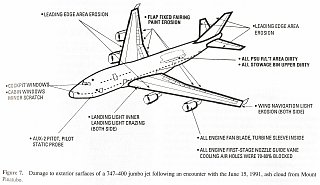Planes and Volcanic Ash
The 1989 Eruption of Redoubt Volcano in Alaska
The 1989 Eruption of Redoubt Volcano in Alaska caused much disruption to air traffic, some damage to aircraft, and one severe incident of loss of power to a flying aircraft.Dec. 15, 1989 Boeing 747 descended into Anchorage and passed through an ash cloud of a small eruption of Mount Redoubt. All four engines stopped and the plane was without power for 8 minutes, losing about 14,000 feet of altitude from 28,000 feet. At 14,000 ft (less than 2000 ft above mountain tops) the engines were restarted.
Speedbird 9 Incident (1982)
On 24 June 1982, British Airwarys Flight 9 flew into a cloud of volcanic ash from the eruption of Mt. Galunggung, Indonesia resulting in failure of all four engines. The reason for the failure was not then apparent to the crew or ground control. The aircraft was without power for about 12 minutes and lost about 23,000 feet. The aircraft was able to glide far enough to exit the ash cloud, and all engines were restarted (although one failed again soon after), allowing the aircraft to land safely.Pinatubo Eruption (1991)
During the 1991 Pinatubo eruption, there were 16 in-flight encounters with volcanic ash from June 12 to 18. At least two cases involved loss of engine power.(Fire and Mud: Eruption and Lahars of Mount Pinatubo, Philippines, 1996)
Damage to aircraft from volcanic ash
Jet engines operating at over 700 deg. cause melting of ash inside the turbines. The remelted ash blocks air passages causing engines to stop.(Fire and Mud: Eruption and Lahars of Mount Pinatubo, Philippines, 1996)
